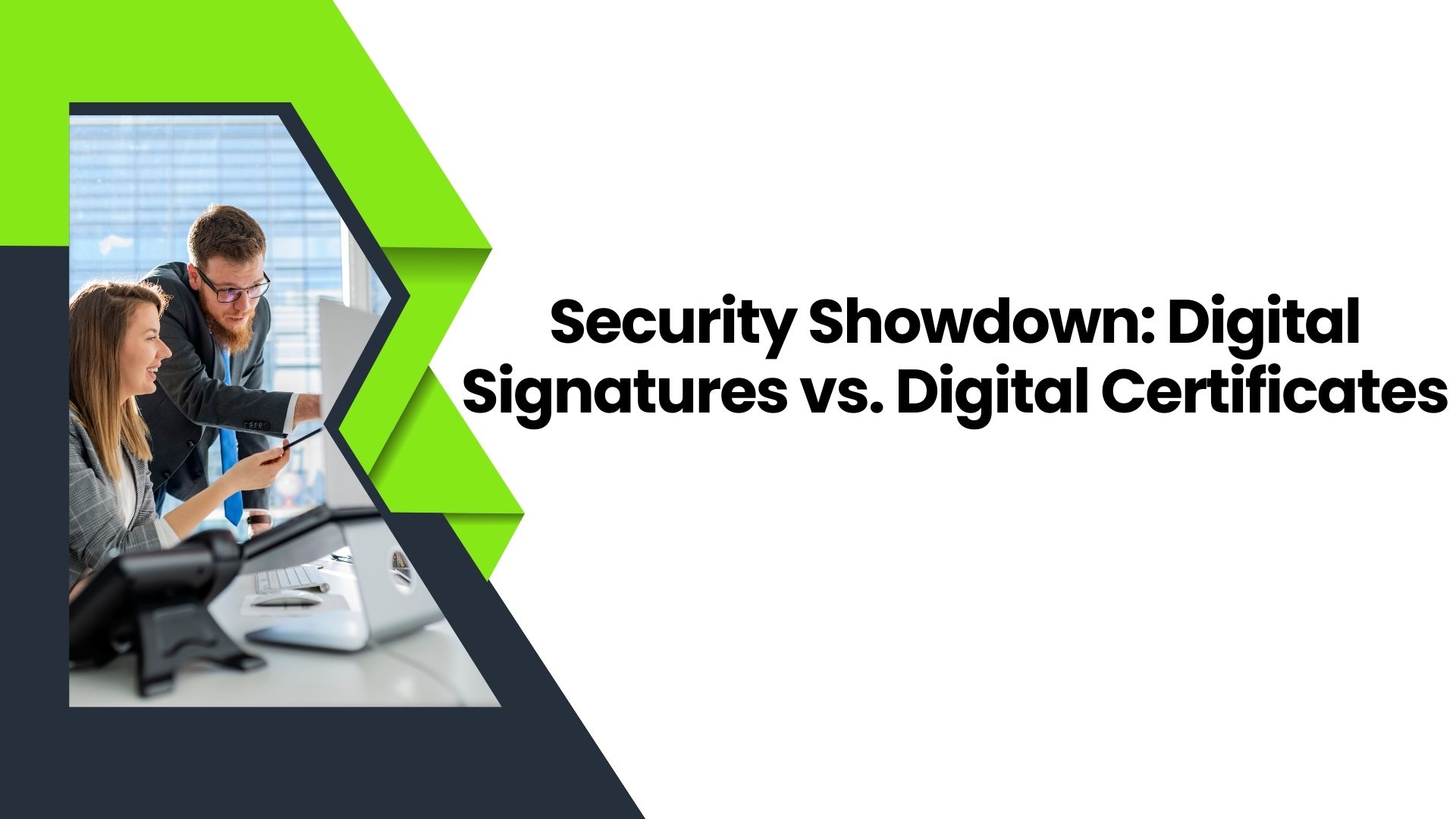
Introduction
In an increasingly digital world, ensuring the security and authenticity of online transactions and communications is paramount. Two key players in the realm of digital security are digital signatures and digital certificates. These technologies play a crucial role in safeguarding data, verifying identities, and protecting against cyber threats. This article will delve into the intricacies of digital signatures and digital certificates, comparing and contrasting their functionalities, applications, and advantages in the ongoing battle for cybersecurity.
Digital Signatures: The Basics
Digital signatures are cryptographic techniques that provide a means to verify the authenticity and integrity of digital documents or messages. When a digital signature is applied to a file or message, it binds the identity of the sender to the content, ensuring that it has not been tampered with during transmission. Digital signatures use asymmetric encryption, employing both a private key and a public key.
How Digital Signatures Work
Key Pair Generation:
A user generates a key pair consisting of a private key (known only to the owner) and a public key (shared with others).
Signing the Document:
To sign a document, the sender uses their private key to create a unique signature. This signature is appended to the document.
Verification:
The recipient uses the sender’s public key to verify the signature’s authenticity and the document’s integrity. If the signature matches, the document is considered valid.
Applications of Digital Signatures
Email Security:
Digital signatures can be used to secure email communication, ensuring that messages haven’t been altered and that they come from the claimed sender.
Document Authentication:
Legal and financial institutions often use digital signatures to authenticate documents, making them legally binding.
Code Signing:
Software developers employ digital signatures to ensure the integrity of their code and to confirm it hasn’t been tampered with before download or installation.
Digital Certificates: The Basics
Digital certificates, also known as public key certificates or SSL certificates, are digital IDs issued by trusted third-party entities known as Certificate Authorities (CAs). These certificates contain a public key, information about the certificate holder, and a digital signature from the CA. They are used to verify the authenticity of websites and online services.
How Digital Certificates Work
Certificate Issuance:
A user or organization requests a digital certificate from a trusted CA. The CA validates the requestor’s identity before issuing the certificate.
Certificate Installation:
The certificate is installed on a web server, binding the server’s public key to its domain.
User Verification:
When a user accesses a website, their browser receives the server’s certificate and verifies it with the CA’s public key. If the certificate is valid, a secure connection is established.
Applications of Digital Certificates
Website Security:
Digital certificates enable secure connections (HTTPS) between websites and visitors, protecting sensitive data like passwords and credit card information.
Email Encryption:
Digital certificates are used in email encryption to ensure that only the intended recipient can read the email.
Code Signing:
Software developers also use digital certificates to sign their code, providing assurance to users that the software is legitimate and unaltered.
Comparing Digital Signatures and Digital Certificates
Authentication:
Digital certificates are primarily used for authentication, while digital signatures provide both authentication and data integrity.
Issuer:
Digital certificates are issued by CAs, ensuring a trusted third-party verification, whereas digital signatures rely on the owner’s public key.
Flexibility:
Digital signatures are versatile and can be applied to any digital document or message, whereas digital certificates are specifically designed for website authentication and email encryption.
Cost:
Obtaining a digital certificate from a CA typically involves a cost, while creating digital signatures using a private key is often free.
Security:
Digital certificates offer a higher level of trust, especially in online commerce and secure communications, but digital signatures can be more practical for everyday purposes.
Suggested Read: Digital Signature Certificate for GST Return
Conclusion
In the realm of digital security, both digital signatures and digital certificates have their roles to play. Digital signatures are more versatile, cost-effective, and can be used in a wide range of applications, but they may lack the high level of trust associated with digital certificates. On the other hand, digital certificates offer robust authentication and are indispensable for securing online transactions and communications.
Ultimately, the choice between digital signatures and digital certificates depends on your specific needs and the level of security and trust required for your digital interactions. For everyday purposes, digital signatures may suffice, while high-stakes online transactions and communication demand the assurance that digital certificates can provide. As our digital world continues to evolve, understanding the strengths and weaknesses of these security measures is essential to keeping our data and communications safe.


